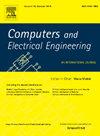diexplain:通过深度学习为2型糖尿病诊断提供透明、可解释的人工智能方法
IF 4
3区 计算机科学
Q1 COMPUTER SCIENCE, HARDWARE & ARCHITECTURE
引用次数: 0
摘要
人工智能已经成为医疗保健行业的关键因素,它被用于医疗保健管理、预测建模、决策和诊断。人工智能技术在一些活动中达到了类似于人类的表现水平;然而,由于人们先入为主地认为这些系统是不可思议的“黑盒子”,它们的广泛采用受到了阻碍。为了满足这些需求,作者设计了“diexplain”,这是一个可解释的混合人工智能模型,旨在帮助诊断糖尿病。DiaXplain利用来自国家健康和营养检查调查(NHANES)的数据,并将卷积神经网络(CNN)与XGBoost集成在一起进行特征提取和分类,保证了更高的准确性和可解释性。这种混合方法允许模型自主识别相关属性,而XGBoost元素增强了其预测效果。DiaXplain使用SHAP (SHapley Additive exPlanations),这是一种可解释的人工智能方法,它阐明了每个预测,帮助用户理解单个和总体模型动作背后的推理。使用必要的测量方法对模型的性能进行了评估,结果显示DiaXplain的准确率超过了当前的方法,达到了98.24%,精度为95.12%,f1得分为97.50。每个预测都由shap生成的解释证实,为医生提供了对影响每个诊断结果的原因的透明理解。与传统的黑盒系统不同,diexplain提供本地和全局可解释性,使其决策易于理解和信任。这种对高诊断准确性和可解释性的双重关注使DiaXplain对人工智能驱动的医疗保健做出了新的贡献,弥合了预测能力和临床透明度之间的关键差距。这种清晰度对于培养医疗保健提供者的信心、促进更明智的决策和加强糖尿病的管理至关重要。DiaXplain通过将高诊断准确性与可解释的预测相结合,标志着人工智能驱动的医疗保健领域取得了重大进展,为医疗保健从业者提供了一种可靠的糖尿病诊断工具,提高了准确性,并通过透明度培养了信任。本文章由计算机程序翻译,如有差异,请以英文原文为准。
DiaXplain: A transparent and interpretable artificial intelligence approach for Type-2 diabetes diagnosis through deep learning
Artificial intelligence has become a pivotal element in the healthcare industry, and it is used in healthcare administration, predictive modeling, decision-making, and diagnostics. Artificial intelligence technologies have achieved performance levels akin to humans in several activities; nevertheless, their widespread adoption is impeded by preconceptions of these systems as inscrutable “black boxes”. In response to such requirements, the authors devised “DiaXplain”, an interpretable hybrid artificial intelligence model intended to assist in diagnosing diabetes mellitus. DiaXplain utilizes data from the National Health and Nutrition Examination Survey (NHANES) and integrates a convolutional neural network (CNN) for feature extraction with XGBoost for classification, guaranteeing both elevated accuracy and interpretability. This hybrid methodology allows the model to autonomously discern pertinent properties while the XGBoost element enhances its prediction efficacy. DiaXplain utilizes SHAP (SHapley Additive exPlanations), an explainable artificial intelligence methodology that elucidates each prediction, assisting users in comprehending the reasoning behind individual and aggregate model actions. The model’s performance was assessed using necessary measures, revealing that DiaXplain exceeds current approaches in accuracy, attaining an exceptional 98.24%, with a precision of 95.12% and an F1-score of 97.50. Every prediction is substantiated by SHAP-generated explanations, providing doctors with a transparent understanding of the causes influencing each diagnostic result. Unlike traditional black-box systems, DiaXplain offers local and global interpretability, making its decisions understandable and trustworthy. This dual focus on high diagnostic accuracy and explainability makes DiaXplain a novel contribution to AI-driven healthcare, bridging the critical gap between prediction power and clinical transparency.This clarity is vital for cultivating confidence among healthcare providers, facilitating more informed decision-making, and enhancing the management of diabetes mellitus. DiaXplain signifies a significant progression in artificial intelligence-driven healthcare by merging high diagnostic accuracy with interpretable forecasts, providing healthcare practitioners with a dependable tool for diabetes diagnosis that promotes precision and fosters trust via transparency.
求助全文
通过发布文献求助,成功后即可免费获取论文全文。
去求助
来源期刊

Computers & Electrical Engineering
工程技术-工程:电子与电气
CiteScore
9.20
自引率
7.00%
发文量
661
审稿时长
47 days
期刊介绍:
The impact of computers has nowhere been more revolutionary than in electrical engineering. The design, analysis, and operation of electrical and electronic systems are now dominated by computers, a transformation that has been motivated by the natural ease of interface between computers and electrical systems, and the promise of spectacular improvements in speed and efficiency.
Published since 1973, Computers & Electrical Engineering provides rapid publication of topical research into the integration of computer technology and computational techniques with electrical and electronic systems. The journal publishes papers featuring novel implementations of computers and computational techniques in areas like signal and image processing, high-performance computing, parallel processing, and communications. Special attention will be paid to papers describing innovative architectures, algorithms, and software tools.
 求助内容:
求助内容: 应助结果提醒方式:
应助结果提醒方式:


